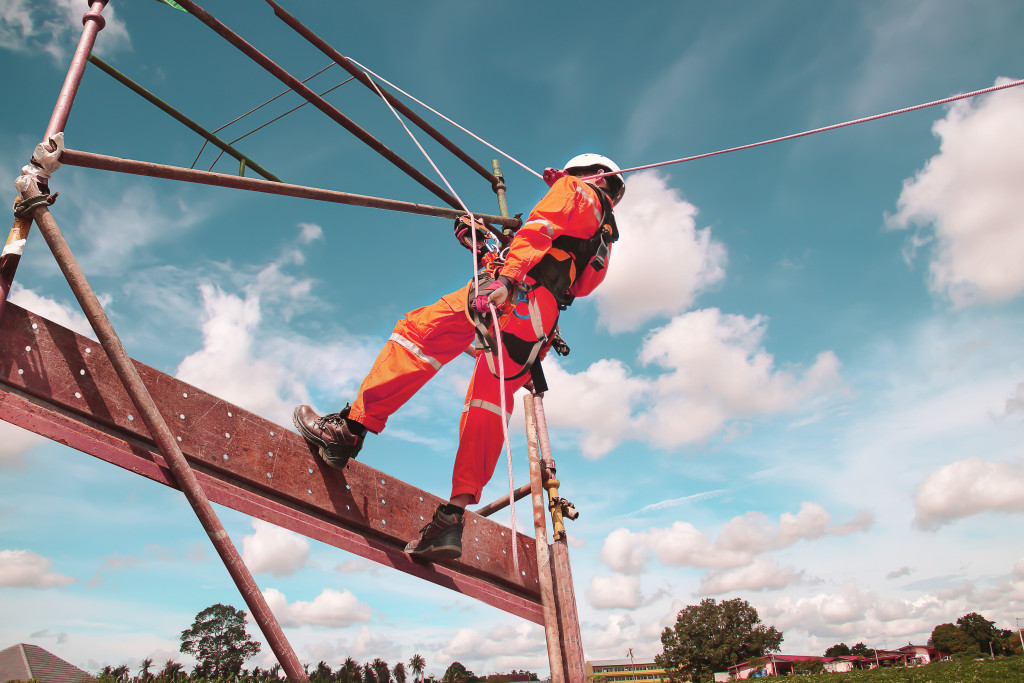Workplace safety is a concern across the business world, but some jobs require pretty extreme conditions. Some dangerous careers put lives at stake, lives that are saved by the minuscule details of the necessary safety standards.
Naturally, there is a lot of training given to people who want these high-risk professions. They must seek certifications, constant re-training, and prove themselves capable of being detail-oriented. The same way that not all safety measures may be what you expect, these jobs may not always be what you think either.
Truck driving is a hazardous career that pays well but has very thin margins for turnover. This can lead to drivers getting fatigued and leading to accidents that can cost their lives and a significant injury to others. Thus, a safety standard for truck drivers is to know a good truck accident attorney.
Pole climbers have a distinctly different job from truck drivers, but the level of safety required is similar. A fatigued pole climber is a danger to himself, and if he is not adequately secured, it can cause some injury and trauma to bystanders. This is a high-paid profession, but it would take a lawyer to get an injured worker their just benefits because people in high-risk occupations find it very hard to get insured.
This is all the more reason why it is of utmost importance that people understand how to stay safe in these dangerous workplaces. Hopefully, consistent reminders of safety regulations and guidelines will be enough to allow you to do a job you love and stay safe while doing it.
Stick to Your Qualifications
Even if a job seems similar to what you are trained for, you must not risk doing it. If you are certified for operating a specific type of machinery and a supervisor is pressuring you to run a different kind of machinery, you must abstain. Report this pressure and seek support from the human resource department. Ensuring that you only do the work you are trained and certified for will keep you safe from personal injury and harm to others.
Wear Safety Gear
Proper safety gear is a critical standard enforced in effective worksites across many professions. If anything, the pandemic has further reinforced the necessity of appropriate safety gear.
Always make sure that your full uniform is on you before attempting to do your job. A missing pair of gloves or a missing face shield can cause injuries you cannot guess. Depending on the level of hazard to you, you might lose a limb or even your sight. It is simply not worth the risk to go into the worksite without the proper gear.
Even the proper shoes are necessary, so there are different shoes of different classifications for all forms of work. Chefs and nurses require non-slip shoes that help avoid slipping and fall injuries. Construction personnel needs steel toe boots with a firm grip that can withstand material falling on them or caustic liquid splashes.

Safety Harness
Safety harnesses are very relevant for jobs such as the one mentioned above, pole climbing, and other jobs like roofing or window washing high rises. It would help if you never stepped foot into the work area without double-checking that your safety harness is secure. Even with scaffolding or footholds provided, your safety harness is your first line of safety for fall prevention.
Seek Alertness
Practicing mindfulness and finding effective ways to keep awake and stimulated are essential in these jobs. If you find that drinks with caffeine help you stay focused and alert, you should use them. But some people experience “crashes” when they drink caffeine, which is like a sudden sense of fatigue as the body digests the stimulant out of their system. If you time it badly, you can experience this “crash” during a critical moment in your high-risk workplace. This is to be avoided at all times.
Regular exercise, cognitive training, and proper sleep and nutrition can do a much better job of helping you be alert. Respecting the danger in the work you do will help you appreciate what your body is capable of doing.
Conclusion
Safety seminars are a necessity in high-risk careers. No matter how long someone has been ding the work, there is always something new to learn. Effective hazard communication and implementing new safety processes and procedures into your workplace can increase your safety and help you improve your productivity. Efficiency is often in getting the job done the right way.
Make sure that your focus is on reducing the risks and minimizing hazardous conditions to do the work. It takes a brave person to do a dangerous job for the well-being of others. It is in your best interests to protect yourself so that you can keep being that person for as long as you are needed.
